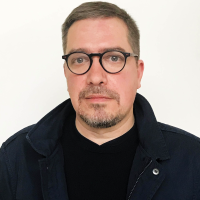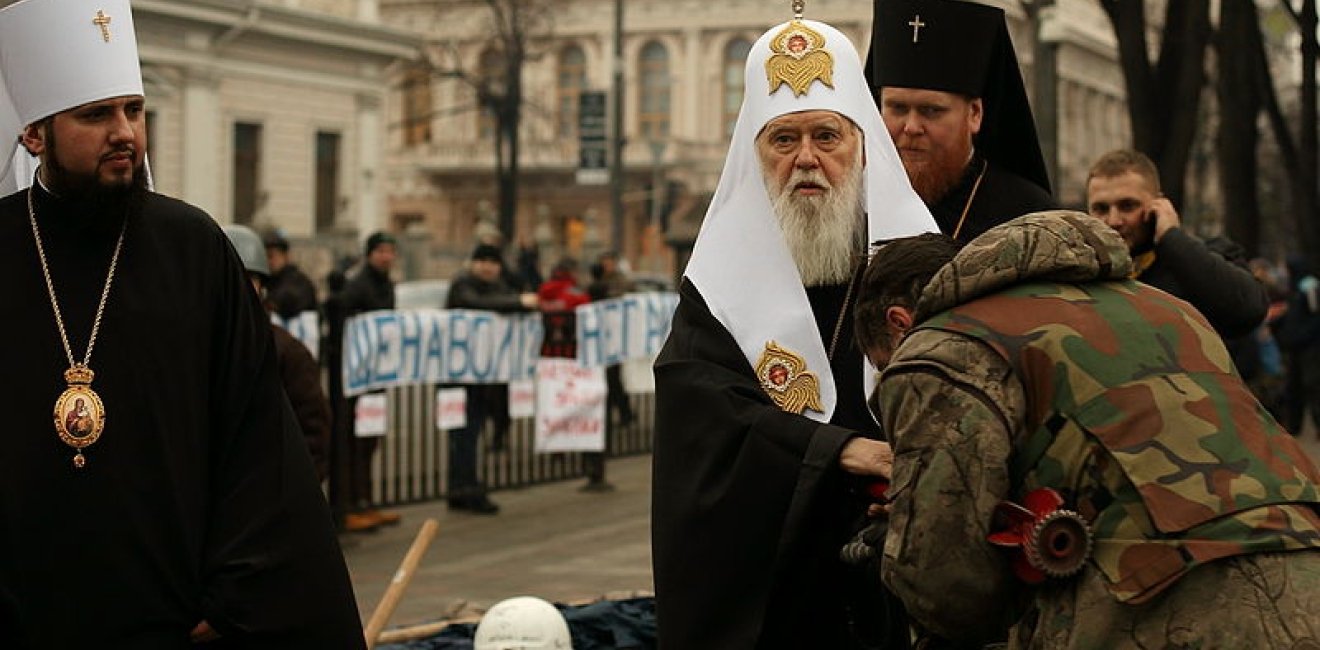
A blog of the Kennan Institute
BY MAXIM TRUDOLYUBOV
The Istanbul-based Ecumenical Patriarch Bartholomew last week endorsed Ukraine’s request to establish an independent Orthodox Church with its center in Kyiv. The move risks adding a religious dimension to the rift between Russia and Ukraine.
Since the seventeenth century Russia’s high priests have enjoyed the right to ordain the bishop of Kyiv, a metropolitan by rank. Last week the Ecumenical Patriarchate of Constantinople, which has historical primacy in the Christian Orthodox world, ruled to revoke that right from Moscow. Russia protested and immediately severed communion ties with the Ecumenical Patriarchate but did not go so far as to declare an anathema.
The Constantinople Patriarchate has lifted the anathema (church interdict) from the two bishops, Patriarch Filaret Denisenko and Metropolitan Makary Maletich, who lead two splinter Orthodox groups in Ukraine. If Filaret’s and Makary’s churches now manage to pull off a merger, they will form, under the symbolic umbrella of the Constantinople cathedra, the backbone of a future independent Orthodox church of Ukraine.
Unlike Roman Catholicism, Eastern Orthodoxy does not have a strict top-down structure. Rather, it is a collection of churches of varying age, stature, and influence. Patriarchates bearing grand old names, like those of Constantinople or Alexandria, are influential by tradition but are small and do not have entire countries to themselves: their seats were created in the political realities of the late Roman Empire. Most modern-day Orthodox churches, like those of Bulgaria, Romania, or Serbia, are large and follow existing state borders.
The Russian Orthodox Church, with its 100 million believers out of the world’s 300 million Orthodox, is arguably the largest. The Moscow Patriarchate likes to use the term “canonical territory” to describe its reach, which encompasses Russia, some countries of the former USSR, and minority Orthodox groups in other countries, such as Japan. Generally, when new borders appear, new churches spring up, even though Moscow church leaders do not like to admit this is the case.
It was thus just a matter of time before Moscow’s canonical territory shrank and Ukraine got a church of its own. The Russian church’s effort to hold on to its presence in Ukraine was undermined by the Moscow Patriarchate itself as its bishops followed President Vladimir Putin in stating that Russians and Ukrainians were one people, an assertion that lost the church most of its former supporters during the war years.
Petro Poroshenko and Vladimir Putin play church politics for different purposes. Poroshenko, an incumbent readying his reelection bid in 2019, needs an independent church to show to his voters. As Poroshenko enjoys a favorability rating of just 6.8 percent among the electorate, the church move is unlikely to turn the tables for him, though it might boost his rating by a few percentage points.
Ukraine’s Orthodox are dispersed among at least three churches. The Moscow Patriarchate has by far the most parishes in Ukraine, but whereas for the past several years the number of people who associate themselves with the Kyiv Patriarchate has been growing, the number who affiliate with the Moscow Patriarchate’s churches has been dwindling.
Earlier this year, 28.7 percent of those polled considered themselves part of the Kyiv Patriarchate, Filaret’s church; 0.3 percent said they belonged to the Ukraine Autocephalous Church, Makary’s church; 12.8 percent preferred to be seen as part of the Ukrainian Orthodox Church of the Moscow Patriarchate; while 23.4 percent described themselves as “simply Orthodox,” with no particular affiliation. For 37 percent of the population these issues were of no importance (all polling data quoted are from a study by the Razumkov Center, a polling organization). The issue of church independence electrifies the Ukrainian intelligentsia but leaves large parts of the population unmoved.
For President Putin, the Russian Orthodox Church does not have the same significance that the Ukrainian church has for Ukrainian politicians. For Putin, the Orthodox Church is a global, not a national, project. Orthodoxy has always been part of Russian rulers’ global designs, and today’s Kremlin is no exception.
The Russian church also serves as a proxy for most Russians’ identification as Russians. The share of those polled who call themselves “Orthodox,” about 75 percent, routinely coincides with the share of the ethnically Russian population of the Russian Federation. “Orthodoxy is a substitute for ethnic identification,” the sociologist Natalia Zorkaya said in an interview.
Ever since the idea of the “Third Rome” (the fallen Constantinople was the second), which holds that Russia is the successor to the original Rome as the center of Christianity, was proclaimed in sixteenth century, Russia’s rulers have sought to unite the global Orthodox under Moscow’s leadership. Even Joseph Stalin at the end of the World War II entertained the prospect of establishing an “Orthodox Vatican” in the capital of the Soviet Union. The plan did not work out, but neither was it forgotten.
Today’s Moscow Patriarchate is communicating with other centers of Orthodoxy, from Jerusalem to Belgrade, and is trying to nag them into supporting Moscow. The Russian church has warned the Jerusalem Patriarchate, which is not known for being pro-Russian, that it would end services at the Church of the Holy Sepulchre if the Ukrainian “filaretans” were allowed institutional access to the holy site. The Serbian Patriarch Irinej, known for his generally pro-Russian stance, has said that the ecumenical patriarch may not have been following church rules in endorsing the plan for the Ukrainian church’s independence.
Moscow seems to treat its defeat in the fight for the Ukrainian church the way it treated the loss of the pro-Moscow Viktor Yanukovych’s presidency in 2014. Russia’s possible responses, which are always meant by Moscow to be tit for tat, are likely to include attempts to get some controversial Orthodox issues, such as those of the unrecognized Montenegrin or Macedonian churches, resolved in Moscow’s favor. Russia will likely continue its attempts to build ties with loyal churches at the expense of the Constantinople Patriarchate. Using church politics to spread Russia’s influence in the Balkans and other regions will likely intensify.
These would be “normal” political consequences. But the addition of a religious dimension to the war between Russia and Ukraine would be a truly ominous development. In the late twentieth century, many conflicts started as geopolitical and secular and turned religious, escalating as a result. That a faith in the twenty-first century can mobilize for a fight we know mostly from the Middle East experience. Will Christian Orthodoxy become as divided as Shiite and Sunni Muslims have become?
Ukraine and Russia are working from opposite directions to exacerbate their conflict by adding a religious dimension to it. This “desecularization” of the Russian-Ukrainian conflict may have dangerous consequences. One can only hope that both Russian and Ukrainian societies are sufficiently modernized as to be indifferent to faith-based mobilization, and so unlikely to get on a religious bandwagon.
Author

Editor-at-Large, Meduza

Kennan Institute
After more than 50 years as a vital part of the Wilson Center legacy, the Kennan Institute has become an independent think tank. You can find the current website for the Kennan Institute at kennaninstitute.org. Please look for future announcements about partnership activities between the Wilson Center and the Kennan Institute at Wilson Center Press Room. The Kennan Institute is the premier US center for advanced research on Eurasia and the oldest and largest regional program at the Woodrow Wilson International Center for Scholars. The Kennan Institute is committed to improving American understanding of Russia, Ukraine, Central Asia, the South Caucasus, and the surrounding region through research and exchange. Read more

Explore More in The Russia File
Browse The Russia File
Chechnya as a Model of Modern Russia

Russia’s Indigenous Communities and the War in Ukraine

Gas and Power in a Changing US–Russia Relationship

